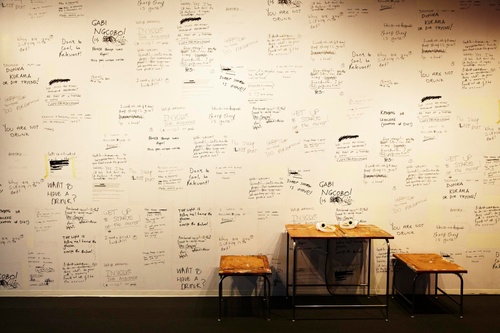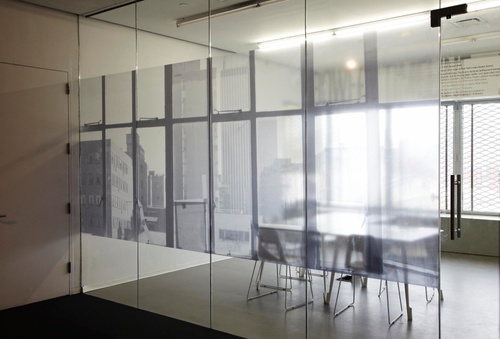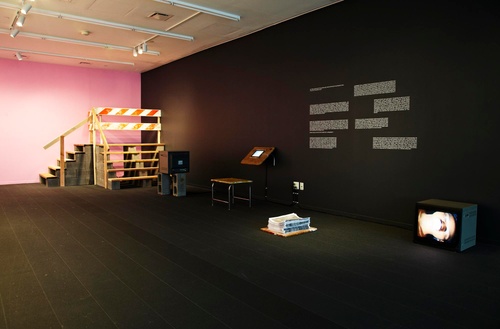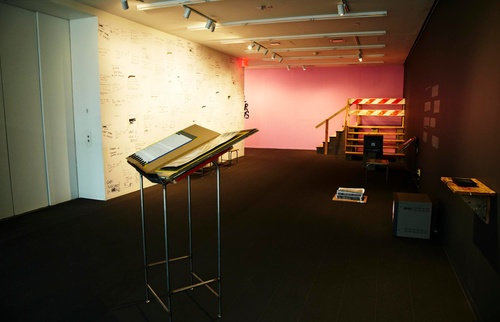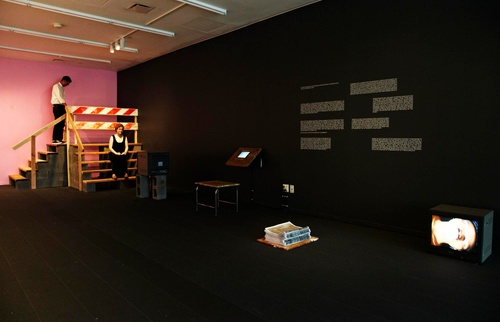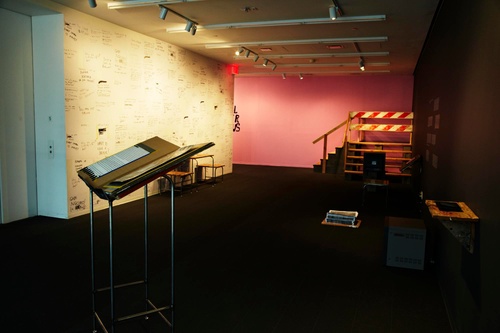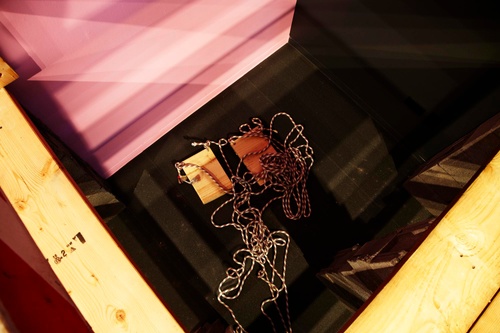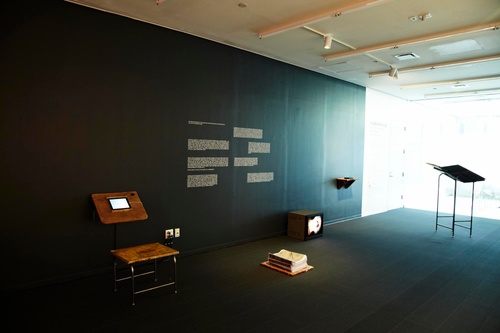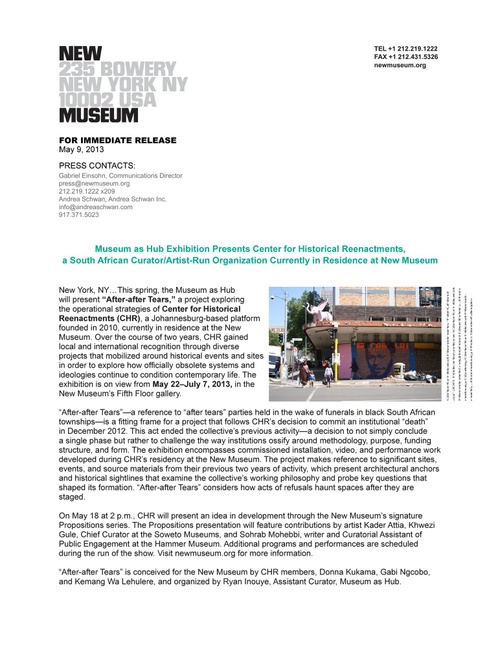Museum as Hub: Center for Historical Reenactments: After-after Tears
Museum as Hub: Center for Historical Reenactments: After-after Tears
Conceived by Center for Historical Reenactments (CHR), a Johannesburg-based collaborative art platform for research and discussion, “After-after Tears” explores a moment that follows the group’s decision to stage an institutional suicide on December 12, 2012.
This act marked a conclusion to CHR’s philosophical program of conversations, screenings, public interventions, and performances, which although originally flexible eventually became an entrenched, recognizable form. CHR’s death foregrounds their intention to not simply conclude a single phase but rather to re-evaluate larger institutional functions and time frames that could enable a different existence.
The title references terminology relating to after-burial gatherings that are a popular youth culture in postapartheid townships. This trend—also known as “Wie sien ons?” (Afrikaans for “Who is seeing us?”)—becomes a fitting frame for a project that explores commemoration, and more specifically, the cultural performances and rituals around death—whether that of a person, institution, or era. Working in Johannesburg and other international contexts, CHR also employs the question of “Wie sien ons?” in order to consider who, how, and to what ends their project has been or will be seen. Leveraging the platform of the New Museum, CHR examines how its own death may afford its members greater visibility and instigate a new way of inhabiting institutions, one perhaps akin to haunting.
“After-after Tears” also includes works by guest contributors in dialogue with CHR’s objectives and motivations. Artist Zanele Muholi’s CHR-commissioned photographIzidwedwe as part of Insila Yomuntu (after Pistoletto) (2010) conjoins a twenty-first-century goods economy with a Western art historical canon that extends back to antiquity. The video Veejays: The Movie (2010), by anthropologists and filmmakers Sandra Gross and Andrés Carvajal, captures the veejay scene in Dar es Salaam in Tanzania, where pirated Hollywood, Bollywood, and Nollywood films are reinterpreted into Kiswahili before a live audience. For CHR, acts such as veejaying demonstrate a process of translation in which any “original” is reassessed to lay groundwork for understanding. In this spirit, CHR re-engages its own original projects specifically for this presentation in New York. References to a site under construction, a street, school desks, and various “windows” out to the world extend art’s capacity to support other ways of living and looking now.
“After-after Tears” is conceived by CHR members Donna Kukama, Gabi Ngcobo, and Kemang Wa Lehulere, with Mbali Khoza and is designed by architect Daniel Lyonga. The project is organized by Ryan Inouye, Assistant Curator, Museum as Hub.
